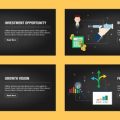1. Understanding Customer Loyalty in the U.S. Market
When it comes to building a loyal customer base in the United States, it’s important to recognize that American consumers have distinct preferences and expectations. Their loyalty is shaped by a mix of cultural values, personal experiences, and the specific ways brands interact with them. To keep your customers coming back, you need to understand what truly matters to them and how you can stand out from the competition.
What Makes American Consumers Loyal?
Customer loyalty in the U.S. is not just about offering good products or services—it’s about creating memorable experiences and genuine connections. Here are some key factors that drive loyalty among American shoppers:
| Loyalty Driver | Description |
|---|---|
| Personalized Service | Americans appreciate when brands remember their preferences and offer tailored recommendations. |
| Consistency | Reliable product quality and dependable service foster trust over time. |
| Rewards & Recognition | Loyalty programs, exclusive deals, and VIP perks make customers feel valued. |
| Authenticity & Transparency | Honest communication and ethical practices build strong brand-customer relationships. |
| Community Engagement | Brands that support local causes or connect with communities earn extra points for loyalty. |
| Easy & Fast Experiences | Smooth online ordering, fast shipping, and hassle-free returns are must-haves for busy Americans. |
Cultural Values That Influence Loyalty
Americans often value independence, convenience, and innovation. They expect brands to respect their time, adapt quickly to feedback, and provide solutions that fit their lifestyles. Word-of-mouth is also powerful—people in the U.S. tend to share both positive and negative experiences with friends and family, which can directly impact your reputation.
Key Expectations of U.S. Customers
| Expectation | Example in Action |
|---|---|
| Quick Response Times | 24/7 customer support via chat or phone. |
| No Hidden Fees | Clear pricing with no surprises at checkout. |
| Diverse Options | Variety in products/services to suit different needs. |
| User-Friendly Technology | Mobile apps and websites that are easy to navigate. |
| Social Responsibility | Sustainable practices or charitable giving programs. |
The Role of CRM in Meeting These Needs
A well-designed CRM system helps businesses gather insights into these preferences and behaviors. By leveraging data from your CRM, you can better anticipate what your American customers want, personalize your approach, and ultimately increase retention rates.
2. Harnessing CRM Data for Deeper Customer Insights
Unlocking the Power of CRM in the U.S. Market
Customer Relationship Management (CRM) systems are more than just digital address books—they’re powerful tools that help businesses in the U.S. truly understand their customers. By tapping into CRM data, you can discover what your customers love, what they might need next, and how to keep them coming back for more.
Gathering Actionable Data
Modern CRM platforms collect all sorts of data from customer interactions—whether it’s through email, website visits, phone calls, or social media. The key is to use this information to make smart business decisions. For example, a CRM can show you which products are most popular with returning customers or flag customers who haven’t made a purchase in a while.
Types of Data Collected by CRMs
| Data Type | Description | How It Helps |
|---|---|---|
| Purchase History | Records of previous transactions | Helps recommend relevant products and target loyalty offers |
| Interaction Logs | Email, chat, and call records | Tracks customer concerns and improves support quality |
| Demographic Info | Name, age, location, etc. | Enables personalized marketing messages that resonate locally |
| Feedback & Reviews | Customer opinions and ratings | Identifies areas for improvement and celebrates successes |
Identifying Customer Preferences
With all this data at your fingertips, you can start spotting patterns. Do certain customers always buy during holiday sales? Are there groups that respond better to text messages than emails? Using CRM insights helps you tailor your approach to fit American shopping habits and expectations—making each customer feel valued and understood.
Ways to Spot Preferences with CRM
- Analyze purchasing trends by region or season
- Track response rates to different types of promotions (email vs. SMS)
- Create customer profiles based on preferred product categories
Effective Audience Segmentation
A big advantage of using a CRM is the ability to segment your audience into meaningful groups. For U.S. businesses, this could mean creating separate lists for loyal VIP customers, first-time buyers, or those who haven’t engaged in a while. Each segment can then receive targeted offers or content designed just for them.
Sample Segmentation Table
| Segment Name | Description | Tactics Used |
|---|---|---|
| Loyal Shoppers | Customers with frequent purchases over 12 months | Loyalty rewards, early access to new products |
| Bargain Hunters | Mainly buy during sales events | Exclusive coupons before major U.S. holidays (e.g., Black Friday) |
| Lapsed Customers | No purchase in the last 6+ months | Win-back campaigns with special discounts or surveys asking for feedback |
By harnessing CRM data in these ways, American businesses can not only meet customer expectations but also build lasting relationships grounded in trust and value.
![]()
3. Personalization Strategies that Resonate with U.S. Customers
Understanding American Preferences Through CRM Insights
The U.S. market is all about individuality and convenience. Americans appreciate brands that recognize their unique needs and deliver tailored experiences. By using CRM insights, businesses can identify customer preferences, purchase history, and engagement patterns to personalize interactions in ways that truly matter.
Personalized Communications
Sending the right message at the right time makes a big difference. For example, CRM data can help segment customers based on location, age group, or buying habits, allowing for targeted email campaigns. Americans value timely offers around national holidays like Thanksgiving or Fourth of July, so scheduling communications accordingly boosts relevance.
| CRM Data Point | Personalization Example |
|---|---|
| Location | Promote local store events or region-specific products |
| Purchase History | Suggest complementary products based on past buys |
| Birthday/Anniversary Dates | Send special discounts or greeting messages |
| Engagement Level | Offer loyalty rewards to frequent shoppers |
Customized Offers and Rewards
Loyalty programs are very popular in the U.S., but what keeps customers coming back is the feeling of being recognized. Use CRM insights to create exclusive deals for repeat customers or special discounts for those who haven’t shopped in a while. Personalized coupon codes and early access to sales make customers feel valued and encourage them to stay loyal.
Example Loyalty Program Features:
- Tiered Rewards: Give higher perks to top spenders (e.g., VIP access, birthday gifts)
- Referral Bonuses: Reward customers for bringing friends with tailored incentives
- Event Invitations: Invite loyal customers to private sales or online webinars
Enhancing Customer Experiences Across Touchpoints
A seamless experience across all channels is key in the U.S., where customers expect consistency whether they shop online or in-store. With CRM data, staff can greet returning customers by name, recommend products they might like, and offer hassle-free returns based on previous purchases.
| Touchpoint | Personalization Tactic |
|---|---|
| Email Marketing | Name-based greetings, personalized product suggestions |
| E-commerce Website | Dynamic homepage featuring relevant offers and reminders about abandoned carts |
| In-Store Experience | Loyalty member recognition and customized checkout offers via POS system integration with CRM |
| Customer Service Calls/Chats | Agents access purchase history to resolve issues faster and suggest solutions tailored to individual needs |
The Power of Personalization in Building Loyalty
The American consumer responds positively when brands remember their preferences and make life easier. Leveraging CRM insights allows companies to move beyond generic marketing into meaningful connections—turning occasional shoppers into lifelong fans.
4. Proactive Engagement and Retention Tactics
Utilizing CRM Data to Keep Customers Coming Back
In the U.S. market, customer loyalty isnt just about making repeat purchases—its about feeling valued and understood. With the right Customer Relationship Management (CRM) tools, businesses can proactively engage loyal customers by anticipating their needs and personalizing communication. Here’s how CRM insights help brands stay one step ahead:
Loyalty Programs That Truly Reward
American consumers love rewards that feel meaningful. Using CRM data, companies can analyze buying habits and tailor loyalty programs accordingly. Whether it’s points for purchases, exclusive access, or surprise perks, a well-structured program can keep customers excited to come back.
| Loyalty Program Type | CRM-Based Personalization | Example in U.S. Market |
|---|---|---|
| Points System | Recommend products based on purchase history | Starbucks Rewards: Personalized drink offers |
| Tiers/Levels | Move loyal customers up tiers based on activity tracked in CRM | Sephora Beauty Insider: Tier-based benefits |
| Surprise & Delight | Send unexpected gifts triggered by milestones in CRM | Amazon: Birthday discounts or exclusive deals |
Targeted Outreach That Feels Personal
No one likes generic emails or irrelevant messages. CRM-driven intelligence helps businesses segment customers based on preferences, location, and behavior. This means outreach—like emails or SMS—can be timely and tailored, increasing engagement rates.
- Email Campaigns: Send product recommendations or special offers based on previous purchases.
- Event Invitations: Invite top customers to VIP events using their profile info in the CRM.
- Seasonal Touchpoints: Reach out during holidays with personalized greetings or promotions.
Sample Targeted Outreach Table
| Customer Segment | Preferred Channel (from CRM) | Example Message |
|---|---|---|
| Loyal Shoppers (12+ orders/year) | “Thank you for being a VIP! Enjoy 20% off your next order.” | |
| Younger Audience (18-25) | SMS/Text Message | “Hey [Name], check out our latest arrivals just for you!” |
| B2B Clients (Repeat Contracts) | Phone Call/Personal Account Manager | “Lets discuss how we can support your upcoming projects.” |
Timely Follow-Ups That Show You Care
The American market appreciates quick responses and proactive service. Use your CRM to trigger follow-ups after purchases, service interactions, or feedback submissions. These touchpoints show customers you’re listening—and that you value their input.
- After-Sale Check-Ins: “How was your recent purchase? Let us know if you have questions.”
- Lapsed Customer Reminders: “We miss you! Here’s a special offer if you return this month.”
- Feedback Requests: “Tell us about your experience and help us improve.”
By leveraging these proactive tactics through your CRM, U.S. businesses can build stronger relationships with loyal customers and set themselves apart from competitors who take a more passive approach.
5. Measuring Success and Continuously Improving Retention
Keeping loyal customers is a top priority for businesses in the U.S., and measuring how well you retain them is just as important as attracting new ones. By leveraging CRM (Customer Relationship Management) insights, companies can track key metrics and make data-driven decisions to boost customer loyalty over time.
Key Metrics for Tracking Customer Retention
To understand if your retention strategies are working, it’s essential to monitor specific metrics within your CRM system. Here are some of the most important ones:
| Metric | Description | Why It Matters |
|---|---|---|
| Customer Retention Rate (CRR) | The percentage of customers who stay with your business over a given period | Shows how effectively you keep customers coming back |
| Churn Rate | The percentage of customers who leave during a set timeframe | Helps identify issues causing customers to leave |
| Repeat Purchase Rate | The percentage of customers who make more than one purchase | Indicates satisfaction and engagement levels |
| Customer Lifetime Value (CLV) | Total revenue expected from a single customer over their relationship with your brand | Helps prioritize high-value segments for retention efforts |
| Net Promoter Score (NPS) | A score reflecting how likely customers are to recommend your business to others | Measures loyalty and overall satisfaction |
Leveraging CRM Feedback and Analytics for Improvement
Your CRM isn’t just for storing contact info—it’s a goldmine for actionable feedback. Here’s how to use those insights:
1. Analyze Customer Behavior Patterns
Look for trends in purchase frequency, product preferences, and service interactions. For example, if you notice that repeat buyers respond well to personalized offers, consider expanding your email segmentation.
2. Gather Direct Feedback Regularly
Use surveys and follow-ups through your CRM to ask why customers stay or leave. Automated feedback requests after purchases can highlight pain points or what’s working well.
3. Segment Customers for Tailored Initiatives
Your CRM can help you group customers by loyalty level, location, or buying habits. This allows for targeted retention campaigns—like exclusive deals for long-time shoppers or re-engagement offers for at-risk accounts.
4. Test and Refine Strategies Continuously
A/B testing different retention offers or communication methods helps determine what resonates best with American consumers. Use analytics dashboards in your CRM to measure results quickly and adjust accordingly.
Quick Reference Table: Using CRM Insights to Improve Retention Over Time
| CRM Insight Type | Action Step | Expected Outcome |
|---|---|---|
| NPS Feedback Scores | Create reward programs for promoters; address detractor concerns directly | Higher loyalty and positive word-of-mouth in the U.S. market |
| Purchase History Data | Email tailored product recommendations based on past buys | Increased repeat sales and engagement rates |
| User Support Interactions | Proactively reach out after support tickets close to ensure satisfaction | Improved customer trust and reduced churn rate |
| Lapsed Customer Alerts | Send win-back campaigns with exclusive American-style incentives (e.g., free shipping, bonus rewards) | Bounce-back of previously lost customers into active buyers again |
The Bottom Line: Continuous Improvement is Key
The U.S. market values personalization, convenience, and quick responses. By consistently tracking key metrics and leveraging real-time CRM analytics, businesses can adapt their retention efforts—ensuring loyal customers stick around year after year.


